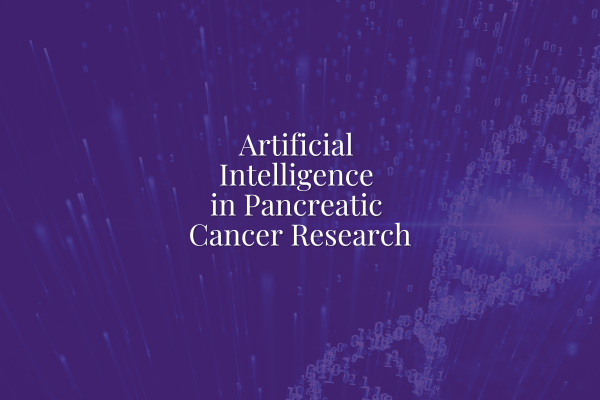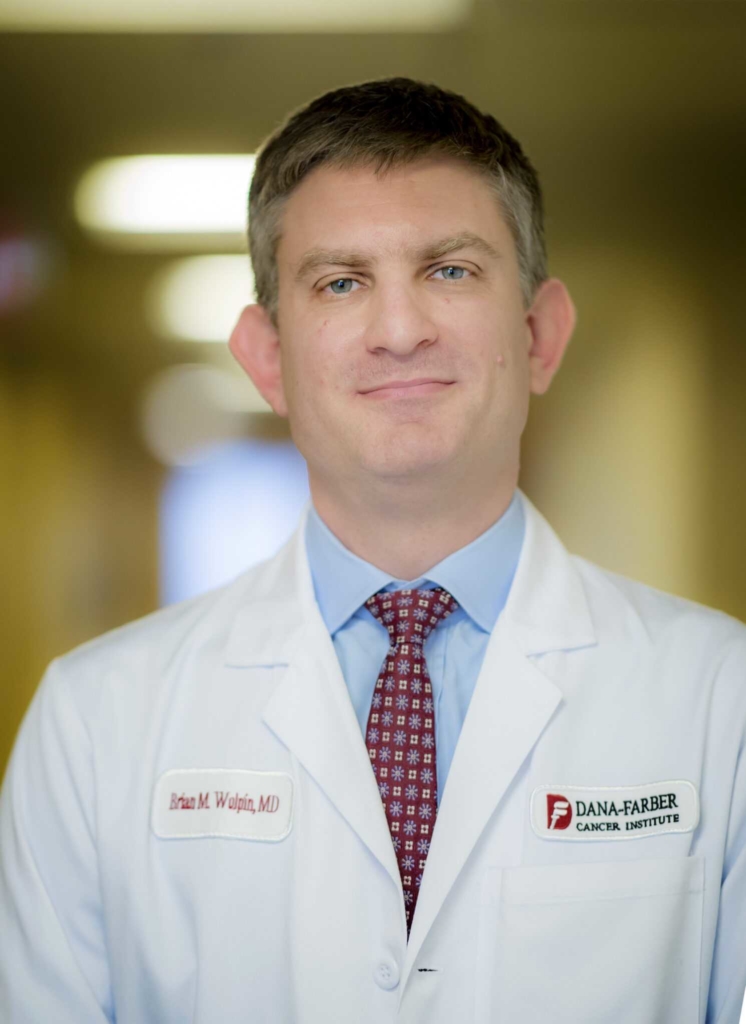Artificial Intelligence in Pancreatic Cancer Research
Topic: Homepage News, In The News, Pancreatic Cancer News


Elliot K. Fishman, MD, Professorship in Radiology, Professor of Radiology and Radiological Science at Johns Hopkins Medicine
In this interview, he discusses how he uses artificial intelligence in his study FELIX 2.0. The Integration of AI into the Early Detection and Management of Pancreatic Cancer with Novel AI Algorithms and Advanced Data Analysis.
CAN YOU GIVE US A SUMMARY OF THE GOALS OF THE FELIX 2.0 PROJECT?
“The goal of FELIX 2.0 is truly to change the trajectory of how pancreatic cancer is detected, how patients are evaluated, and improve outcomes. By harnessing the power of artificial intelligence, we will aid radiologists and clinicians in detecting pancreatic cancer when it could have otherwise been missed. This is an innovative way of approaching what has been a challenge for many decades. Between Johns Hopkins Medicine, the Lustgarten Foundation, and Microsoft AI for Good, we are pooling our vast resources to improve how we do things, especially considering recent advancements in AI technology. With over six years of experience on this project, coupled with the remarkable progress in AI hardware and programming, it’s the perfect time to really go after a project like this.”
HOW ACCURATE IS AI IN DETECTING PANCREATIC LESIONS? IN THE PREDICTION MODEL?
“Leveraging Microsoft’s invaluable support and the rich dataset from our previous program, we have successfully developed highly accurate algorithms capable of identifying pancreatic cancer lesions with an accuracy rate of over 90%. The strength of our results thus far has propelled us to the next phase of our research, as we embark on expanding our data set and testing an additional 2,500 cases. We are testing the most difficult cases to detect with 90% accuracy, which means that for the average case, our numbers are much higher.”
HOW HAS THE COMMITMENT WITH MICROSOFT HELPED THE PROJECT?
“What’s important for people to understand is that we are working with a part of Microsoft called Microsoft AI for Good, which provides technology and resources to empower organizations working to solve global challenges. Their goal isn’t to make or sell products; their mission is to work on very difficult scientific problems. Microsoft has provided world-class computer scientists who work on projects that others can’t solve. Our collective dedication to this cause creates a seamless alignment, allowing us to confront some of the most complex challenges of pancreatic cancer.”
HOW DIVERSE IS THE DATASET THAT YOU HAVE BEEN WORKING WITH FOR THE AI MODELS?
“We’ve been lucky to have a really strong dataset through Johns Hopkins. The pancreatic cancer data has been extensively segmented, analyzed, and proven to include a broad range of people that closely match the distribution of the US population. Developing algorithms that work effectively on all data is one of the biggest challenges when working with AI. We aim to bridge this challenge in two ways: 1) expand our data beyond what we have access to at Johns Hopkins, and 2) develop a prototype so that doctors can start using our algorithms in practice.”
WHAT ARE SOME OBSTACLES THAT ARE EXPECTED IN EXPANDING THE EARLY PROTOTYPES?
“One challenge we are most cognizant of is usability. The only way you can measure success is if everybody, everywhere, can use what we have, and it’s successful for them. It needs to be simple to use, easily understandable, and people need to have confidence that it will work well when they use it. Another challenge is diverse datasets; if we were only successful doing something at Johns Hopkins, that’s not success. That’s why expanding our data is critical. We hope to get to a point where clinicians can use the software at their own sites, thus eliminating a whole layer of obstacles with data-sharing regulations.”
HOW WILL THE ALGORITHM INCORPORATE INTO CLINICAL PRACTICE?
“If we can get it to work as well as we think we can, it can make a huge difference in the earlier detection of pancreatic cancer. Our vision is that our software will pick up structural differences before we even know to look for them – when lesions are two centimeters or less. Right now, the overall 5-year survival rate for pancreatic cancer is 12%, but if we can diagnose it at stage I, the 5-year survival rate increases to 70%. So, we need to identify stage I cases and become proficient at analyzing them. Our software also needs to be seamlessly integrated into the workflow. The goal is for our software to run in the background and assist radiologists not only in identifying suspicious lesions but also in pinpointing exactly where to look. There’s also immense potential for AI to make predictions and risk models based on patient history. FELIX 2.0 has the greatest chance of being successful in improving the current standard of care.”

Brian Wolpin, MD, MPH, Professor, Medicine, Harvard Medical School; Professor of Medicine, Medical Oncology, Dana-Farber Cancer Institute; Robert T. & Judith B. Hale Chair, Pancreatic Cancer, Dana-Farber Cancer Institute
In this interview, he gives an overview on AI’s role in pancreatic cancer research.
WHY IS AI SO IMPORTANT FOR RESEARCH?
“The importance of artificial intelligence lies in its ability to recognize complicated patterns. Many of the questions we ask involve a tremendous amount of complexity, and using AI approaches to identify patterns that are challenging for us to see, especially in multidimensional scenarios, is incredibly valuable. AI can be applied to numerous areas of study, offering a broader technique instead of just focusing on one thing.”
WHY IS AI SO IMPORTANT FOR RESEARCH?
“AI has already been used and continues to be used for early detection from a biomarker standpoint. We have been employing AI to simplify the complexity of medical records and identify patterns that could indicate an upcoming pancreatic cancer diagnosis. This is an example of taking an extremely complicated dataset, which is hard to discern patterns in, and simplifying it—specifically for primary care providers to detect a possible diagnosis before the patient sees an oncologist. Additionally, we have been conducting a lot of imaging work, including Project FELIX, which utilizes machine learning in imaging studies so that radiologists at smaller centers can detect pancreatic cancer masses that would typically be missed. Machine learning algorithms are used for cell segmentation and identification, automating many processes. Thus, we can leverage AI in multiple areas to not only diagnose earlier but also to develop therapeutic approaches for patients.”
WHAT KIND OF DATA AND COLLABORATIONS ARE NEEDED?
“We need large and diverse amounts of data. If you input all the data from one health system or one racial-ethnic group, then that’s all you can predict in, and you won’t predict in others. So, the time-consuming part of the work we’ve been doing with this is just aggregating data that’s in large enough quantities in terms of the amount of data available and the diversity of that data.
For the medical record work, it’s taken years to get all the data in usable formats that talk back and forth between different health systems. We’ve also been using natural language processing approaches because you don’t only want ICD codes (the International Statistical Classification of Diseases and Related Health Problems, a medical classification list by the World Health Organization). There is so much other information in a medical record, and if you could pull out symptoms, diagnoses, and other things, it would be invaluable. So, the amount of data needed is large, and the requirement of diversity among the patients in that data is essential.
There also isn’t a good reference set of scans from before a patient was diagnosed. The FELIX project has been working to find the mass, but we would like to see scans from before there was a visible mass and what the characteristics were on those scans that tell clinicians they should be following a patient more closely for pancreatic cancer.”
ARE THERE ANY CONCERNS WITH THE ACCURACY OF AI?
“Some of the concerns in the community have been around the lack of diversity and how well AI models perform across more diverse populations. If you only study the AI model in a particular group, how generalizable is it then to other groups? And if it’s not generalizable, how are you perpetuating healthcare access to other groups with less access to medicine?
Other concerns depend on the question and the problem. There are places where AI could work very well, and others where it doesn’t perform as effectively. In our imaging studies, we conducted a pilot where we had two radiologists perform a scan, and then the AI algorithm performed the same scan. The variability between the two radiology readers was the same as that of the AI reader for a specific scan. However, there are other scans where the AI algorithm didn’t perform as well and needed some work. So, it really depends on the question you’re asking and the specific way you build the AI model to provide the output you’re looking for.”
WHAT ARE THE CURRENT OBSTACLES IN AI RESEARCH FOR PANCREATIC CANCER?
“The quantity, quality, and diversity of data have been obstacles. For example, some of the ICD coding, which is what doctors put in medical records after a visit for billing, isn’t very accurate. A lot of quality control is required because the AI algorithms will pick up patterns of any kind. If the pattern is based on errors in the data, the algorithm will pick up those errors, leading to false conclusions.”
ARE THERE ANY SPECIFIC PROJECTS COMING UP IN THIS SPACE YOU’RE EXCITED ABOUT?
“AI has a lot of potential for early detection. Early detection requires a substantial amount of data input, but it’s difficult for most clinicians to discern patterns. So, that is a really neat place for AI to be applied. AI model-building around risk will also potentially be especially useful. There seems to be substantial progress being made in using machine learning approaches to understand imaging, particularly CT imaging. So, that seems like another area where AI could be valuable. We have been expanding and automating the segmentation of five or six different organs in the abdomen, and we’re trying to standardize based on a host of unique features. Lastly, in tissue analyses, we’ll likely see pathologists moving away from just qualitative review and towards a more quantitative approach. All these projects are exciting, and I hope they will prove to be very valuable.”

Alan Yuille, PhD, Johns Hopkins Whiting School of Engineering
In this interview, he discusses how he leverages artificial intelligence in his study Felix Civitas.
CAN YOU GIVE US A SUMMARY OF THE GOALS OF THE FELIX CIVITAS PROJECT?
“The idea behind FELIX CIVITAS is to leverage artificial intelligence to detect tumors earlier by analyzing a vast array of CT scans. The FELIX program demonstrated that algorithms work extremely well at detecting pancreatic cancer tumors on Johns Hopkins data. However, we need to expand the dataset to ensure effectiveness for all cases and clinicians. FELIX CIVITAS, in conjunction with City of Hope Comprehensive Cancer Center, will provide access to a huge amount of data and expertise, helping us understand how we can further improve our algorithms to be even more accurate across the board.”
HOW WILL AI ALGORITHMS CHANGE THE CURRENT USE OF CT SCANS IN PANCREATIC CANCER?
“CT scans are useful because a lot of people already undergo them for a variety of reasons. If our programs can analyze scans and detect any structural changes related to pancreatic cancer even before they become visible to the human eye, we have a better chance of diagnosing the disease earlier, when it’s still treatable.”
WHY IS THERE SPECIFICALLY A POTENTIAL FOR AI ALGORITHMS IN CT SCANS COMPARED TO OTHER IMAGING MODALITIES?
“Some imaging modalities expose people to more radiation than others, which we want to avoid as much as possible. With CT scans, radiation exposure is minimal, and the resolution is of high quality. CT scans are also performed quite frequently, with approximately 50 million taken each year in the US. This represents a huge number of people, so we’re not asking individuals to undergo another type of scan.”
WHAT KIND OF DATA IS REQUIRED FOR THE AI ALGORITHMS?
“We really want a diverse set of scans, diverse in many senses: demographics, hospitals, modalities, etc. Scans from different hospitals are especially important as hospitals use different modalities and scanners with differences that may not be visible to the human eye but are visible to AI. There have been many cases where AI algorithms work wonderfully at one hospital but perform poorly at another. This is a known problem in computer vision and the AI community called domain transfer. So, it’s critical that our algorithms work on data from any medical center.
We also need a massive amount of rich data for the algorithms to learn from. Algorithms are called “data-hungry” – in general, the more data you provide, the better they perform. So, the more data we have, the more we can use to train and test the AI algorithms. Additionally, we want to be sure we are testing on the hardest cases. Otherwise, a patient could come in with a tumor in a particular position, and if the AI algorithms have never encountered it before, they may make a mistake.”
DO YOU ANTICIPATE ANY ISSUES IN INTRODUCING THE PROTOTYPE INTO THE HOSPITAL WORKFLOW?
“AI researchers and medical doctors are very different. We need to ensure that the algorithms will assist doctors and radiologists in a way that aligns with their needs and priorities. Additionally, there are some issues concerning the integration of AI algorithms into the workflow, especially from an organizational standpoint. Hospitals store data differently – the format, accessibility, etc. We must ensure that hospitals can address these technicalities appropriately; otherwise, it could lead to significant problems.”
HOW WILL THE PROJECT SCALE TO COMMERCIALIZATION?
“Getting the prototype into the system and developing it so that doctors are satisfied with its performance – that would be the path. Once that is done, the issue of funding for these endeavors arises, but we’re currently focused on reaching the point where people would be interested in commercializing it.”

